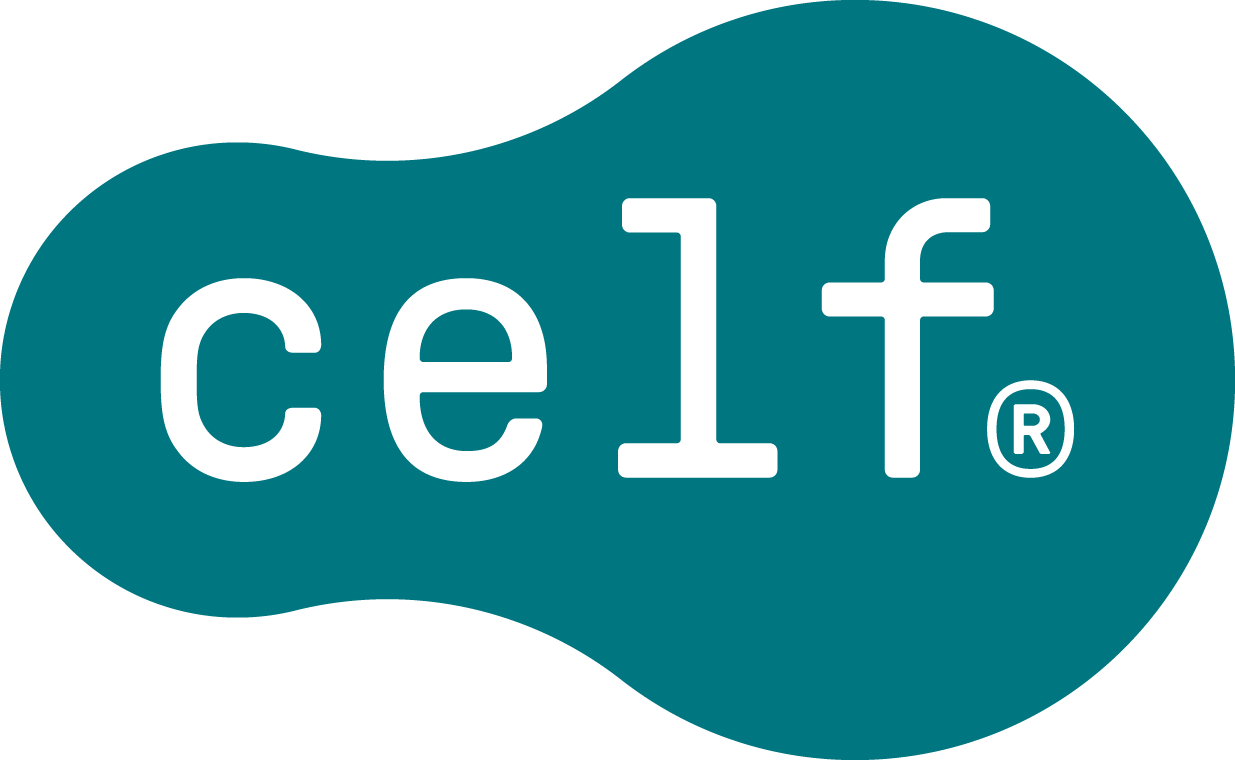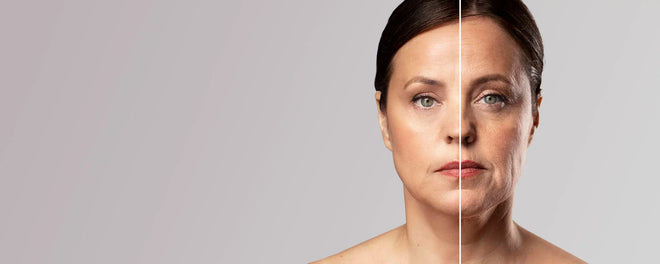Why Your Skin Sags in Your 30s—And 7 Natural Ways to Firm It
Table of Contents
What Causes Sagging Skin in Your 30s? Here’s the Science—And How You Can Fight Back Naturally
Does your skin not feel as firm as it used to? You are not the first person asking, and it is indeed common. The 30s are key years in the natural skin ageing process. You may start to notice very subtle symptoms: decreased levels of elasticity, fine lines, and a little loss in volume.
But once you know why all this happens, you can be one step closer to reclaiming it. And when you’re informed, you can choose tools that work, with no need for invasive procedures or downtime.
At CELF, we believe in intelligent, accessible, and scientifically proven skincare; hence, we are developing and promoting the non-invasive technology CELF Microvibration Therapy aims to support the appearance of firmer, more refreshed skin using surface-level technology.
CTA: Learn how CELF naturally supports firmer, healthier-looking skin → Explore the science behind CELF.
Skin Science 101: How Does the Skin Stay Firm?
The three key players that keep skin structure and resilience intact are:
-
Collagen: The main protein giving skin strength and firmness
-
Elastin: Adds stretch and flexibility to the skin, works to let the skin "bounce back"
-
Fibroblasts: Specialised skin cells that produce both collagen and elastin
Collagen production naturally begins to decline from your mid-20s, by about 1% annually on average. Simultaneously, the activity of fibroblasts slows down, and hence the cell turnover.
Source: National Centre for Biotechnology Information
What Causes Skin to Sag in Your 30s?
A. Natural Ageing
-
Reduced collagen and elastin synthesis
-
Slower skin cell regeneration
B. Lifestyle and Environmental Stressors (Extrinsic Ageing)
-
UV Exposure: UV exposure contributes to collagen breakdown over time in the skin.
-
Smoking: Cuts down on normal blood flow and also raises the damage from free radicals.
-
Poor Diet: Lack of hydration and nutrients like vitamin C or omega-3s
Source: PMC Dermatology Photodamage Study
C. Hormonal Fluctuations
-
Oestrogen Decline: May influence skin hydration and texture.
-
Stress-Driven Cortisol: May accelerate collagen breakdown.
Source: Hormonal Skin Ageing Research
D. Fat & Muscle Volume Loss
-
Loss of cheek and jawline volume leads to skin sagging
-
Reduced support underneath the skin leads to a less contoured appearance.
E. Repetitive Movement & “Tech Neck”
-
Looking down at screens can contribute to jawline laxity.
-
Repeated facial expressions lead to fine lines becoming deeper.
CTA: See how CELF targets sagging and tech-neck areas gently → Learn more about CELF
Early Signs of Sagging in Your 30s
-
Flattening in the cheek area
-
Less defined jawline
-
Filipinos are becoming more noticeable.
-
A “tired” appearance, even with adequate sleep
Pro Tip: Early use of CELF can support collagen renewal and help delay more advanced structural changes.
Generational Treatments: Advantages & Disadvantages
A. Topical Products
Retinoids, peptides, vitamin C, and hyaluronic acid
-
✅ Cheap and easily available
-
❌ Can cause irritation; take time for results
B. In-Clinic Treatments
Microneedling, laser,radiofrequency (RF) therapy
-
✅ Stronger results under clinical supervision
-
❌ Expensive; with usage downtime
C. Injectables (Fillers & Botox)
-
✅ Immediate volume and line-smoothing
-
❌ Maintenance-heavy and not preventive; risk of unnatural results
CELF: A Non-Invasive and Smart Solution to Skin Firmness
CELF Microvibration Therapy uses low-frequency vibrations (inspired by the award-winning motor inside the Oral-B iO toothbrush) to lovingly support the skin internally—no needles, no downtime, no irritation.
CELF Helps:
-
Stimulate natural collagen and elastin production
-
Improve local circulation and nutrient delivery.
-
Help in the absorption of hydrating serums (like hyaluronic acid)
-
Gently exfoliate to enhance cell turnover.
Source: Vibrational Therapy Study (NIH, 2020)
And yes, CELF is safe for sensitive skin.
CTA: Discover the future of home skincare → Shop CELF now
Lifestyle Tips to Support Skin Firmness in Your 30s
To further enhance your CELF experience, incorporate these tremendously helpful everyday habits:
1. Nutrition
-
Eat foods to boost collagen: berries, leafy greens, oily fish, and bone broth.
-
Get antioxidants: vitamin C, E, and polyphenols to protect cell life
2. Daily Sun Protection
-
Use SPF 30+ regardless of whether you are indoors or outdoors
3. Sleep and Stress Management
-
Get about 7-8 good-quality hours of sleep.
-
Manage stress through yoga, mindfulness, or journaling
4. Face Massage and Circulation
-
Use CELF for 2 minutes daily to promote microcirculation and lymphatic drainage.
CTA: Add science to your skincare with CELF → Try it now
FAQs
Q: Can I apply CELF during my 20s or post-30s?
Sure! CELF works great both as a preventive and restorative skin care tool, thus applicable at any age.
Q: Is it safe to use CELF on sensitive skin?
It is. CELF is composed of gentle vibrations and does not apply heat or chemicals.
Q: When will I start to see the results?
Most users experience brighter and firmer skin within 2 to 4 weeks of continued use.
Q: Why is my skin so saggy at 30?
Sagging skin in your 30s can result from a natural decline in collagen and elastin production, sun damage, poor nutrition, or weight fluctuations. Genetics and lifestyle factors like smoking or dehydration can also speed up the aging process.
Q: Can sagging skin be reversed naturally without surgery?
Yes, mild sagging can often be improved naturally through facial exercises, hydration, collagen-boosting foods, retinol alternatives like bakuchiol, and non-invasive treatments such as red light therapy or microcurrent facials.
Q: What vitamin deficiency causes sagging skin?
Deficiencies in vitamins C and E—both powerful antioxidants—can lead to a loss of skin firmness. Vitamin C is essential for collagen production, while Vitamin E supports skin repair and hydration.
Q: Can you reverse aging skin in your 30s?
While you can't completely reverse aging, you can significantly improve skin firmness and tone with a consistent skincare routine, sun protection, a nutrient-rich diet, and natural remedies like hyaluronic acid, peptides, and facial massage.
Q: How to tighten face skin naturally at home in your 30s?
Try natural methods like applying aloe vera, using egg white masks, massaging your face daily, drinking plenty of water, and eating antioxidant-rich foods like berries, nuts, and leafy greens to support skin elasticity.
Conclusion: An Ideal Time to Start Is in Your 30s
In your 30s, skin starts to sag naturally. But that does not mean you cannot do anything to enhance the resilience and glow of your skin.
CELF Microvibration Therapy offers a non-invasive way to support skin comfort and firmness, backed by emerging science on vibrational skincare.
Take control of your skincare today with CELF.




